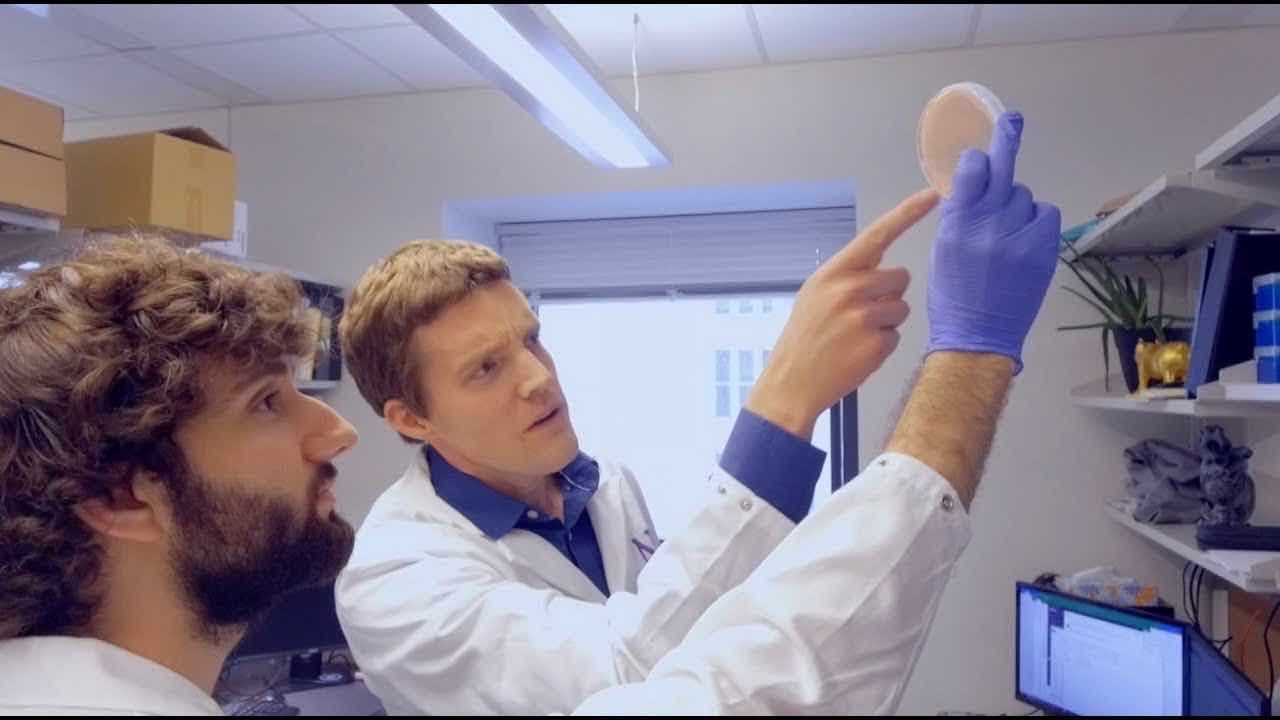Synthetic Microbial Community (SynCom) - Its Effect In Sustainable Agriculture
The synthetic microbial community (SynCom) approach is a new research field that combines a synthetic biology approach with knowledge generated from microbial community analysis, metagenomic approaches, and bioinformatic approaches that have become more accessible with the introduction of Next Generation Sequencing technologies. Understanding the dynamic interactions between microbial ecosystems can help engineers design microbial consortia with robust, stable, and predictable behavior.
Author:Suleman ShahReviewer:Han JuJul 15, 202258 Shares986 Views

The synthetic microbial community(SynCom) approach is a new research field that combines a synthetic biology approach with knowledge generated from microbial community analysis, metagenomic approaches, and bioinformatic approaches that have become more accessible with the introduction of Next Generation Sequencing technologies.
Understanding the dynamic interactions between microbial ecosystems can help engineers design microbial consortia with robust, stable, and predictable behavior.
SynComs are created by co-culturing various taxa under carefully controlled settings in order to replicate the structure and function of a microbiome.
The underlying premise is to minimize the complexity of the original microbial community while retaining some of the critical interactions between bacteria and their hosts.
The goal is to improve community stability through synergistic relationships among its members.
Several studies have found that SynCom treatment improved plant developmentin both greenhouse and field environments.
Microbes At The Plant-Soil Interface
Microbes and plants interact during their whole lifecycle. These interactions might happen both above and below ground. While some interactions are random, many are organized by the plant.
Vertical transfer can occur when endophytes living within a plant are transmitted through vascular connections, or when bacteria become incorporated within a developing seed and may play a role in seed germination and the development of a root system to aid in initial establishment and plant survival.
Furthermore, plant roots actively release carbon-containing chemicals that influence all microbial growth around a root. Bacteria are horizontally transmitted from bulk soil to the rhizosphere when they are drawn to the plant in this manner.
The rhizosphere is the soil that is directly influenced by root exudates. This zone has been subdivided further into the endorhizosphere, ectorhizosphere, and rhizoplane. The endorhizosphere is a zone of tissue in the plant root where bacteria can inhabit. The endorhizosphere is defined by the rhizoplane, which is the root's surface, and the ectorhizosphere, which is impacted by root exudation and rhizodeposition.
The bulk soil microbiome can provide inoculants to the rhizosphere microbiome. The rhizosphere microbiome is constructed differently than the soil microbiome.
Plants commence this differentiation through root exudates, which attract certain microorganisms to the rhizosphere to assist plant growth and development.
The plant can control the recruitment of a subset of microorganisms from the rhizosphere to adhere to the rhizoplane and then travel to the endorhizosphere by modulating the release of signaling molecules and activation of plant immune responses. Plants, in general, change their rhizosphere to attract organisms with advantageous features such as plant growth stimulation, nutrient solubilization, and pathogen growth suppression.

Arthur Prindle's Lab: Synthetic Biology in Microbial Communities
Major Drivers Of Microbial Diversity In Plant Ecosystem
Because plant-microbe interactions are complicated, defining the key drivers of microbial diversity is a difficult undertaking. Plants, microbe-microbe interactions, and edaphic variables all have an impact on the composition of microbial communities.
These parameters mostly influence microbial selection via root exudates. Root exudates contain a wide range of compounds, primary and secondary metabolites.
Primary metabolites, such as the labile carbon in root exudates, promote the growth of fast-growing microbes with higher nutritional needs, allowing them to outcompete slow-growing microorganisms with lower nutritional needs.
Several studies have found that bacteria from the phylum Proteobacteria, which are known to respond to labile carbon, are more abundant in the rhizosphere than in bulk soils.
Similarly, secondary metabolites elicit a variety of responses in organisms. Flavonoids, for example, attract symbionts during nodule formation, increase mycorrhizal spore germination and hyphal branching, and have an effect on legume quorum sensing. The microbial diversity in the plant ecosystem can be significantly influenced by altering the composition of root exudates.
The plant species, genotype, immune system, physiological age, nutritional state, and pathogen infection are all plant variables. Plant species have a major influence on the organization of rhizosphere communities due to differences in root shape and metabolite exudation.
Colonization of several bacterial populations in the rhizosphere of four plant species - wheat, maize, rape, and barrel clover - was seen as a result of root exudates.
Core Microbiomes And Their Application Potential
A core microbiome is made up of bacteria that a plant recruits regardless of the surroundings. Key microbial species harboring crucial functional genes for the plant host are found in these core microbiomes.
Microbe functional redundancy, or the coexistence of many taxa performing a certain biochemical function, allows for environmental changewithout compromising plant host viability.
Furthermore, the network of connections between organisms acts as a buffer against disturbance by enlisting various microbial combinations to perform specialized roles. For further research, a dynamic functional community can be developed by focusing on the core microbiome rather than the very complex native microbiota.
The finding of the core microbiomes of many crops has been made possible by recent improvements in high throughput sequencing and bioinformatic technologies.
Marker gene amplicon sequencing has been widely utilized to investigate microbial interactions with various plant components under a variety of environmental circumstances. A core microbiome can be identified via co-occurrence network analysis of the generated genetic data.
It also investigates if members have a positive or negative association depending on their frequency or abundance.
Furthermore, microorganisms' placements in the network can suggest their importance in the microbial community. Highly interacting core microbiome members known as "hub" microbes have been demonstrated to have a significant influence on the microbial communities of plant hosts.
Several researches have been published on the taxonomy of core microbiomes in various crops. Walters et al. discovered seven bacterial operational taxonomic units (OTUs) in the maize rhizosphere at various ages and field settings in 2008.
All seven OTUs were taxonomically assigned to the phylum Proteobacteria, with genus-level differences. Similarly, the citrus rhizosphere's core microbiome was found by a thorough analysis of soil samples from twenty-three locations in eight citrus-producing countries spread across six continents.
These findings indicate that the core microbiome can select for essential members of the microbial community who can then be evaluated in vitro for microbe-microbe interactions and possible activities.

The Ecology of Microbial Communities
Synthetic Community Approach In Sustainable Agriculture
Since the nineteenth century, numerous studies have indicated that beneficial bacteria can be effectively used as inoculants for agricultural output. Well-studied plant-microbe connections that have been effectively exploited in agriculture include rhizobia-legume symbiosis and arbuscular mycorrhizal associations.
Beneficial microorganisms are traditionally selected based on in vitro screening for specific taxa with one or more PGP properties, such as nitrogen fixation, phosphorussolubilization, growth-regulating hormone synthesis, and so on, with limited assessment under controlled environmental settings.
Inconsistent output in the field is a big issue since inoculants frequently fail to compete with indigenous soil bacteria under varying climate conditions, soil type, and other environmental factors.
A good inoculant must be able to compete with other microorganisms, colonize efficiently, and maintain a stable relationship with plants throughout the growth season. As a result, it is not surprising that contemporary inoculants made with pure isolates can have efficacy issues.
A SynCom could be a wonderful alternative to traditional inoculants since it can combine multiple microbial communities that can partially imitate the functioning environment of those microorganisms.
Because it combines the concepts of microbial ecology and genetics, the SynCom method has emerged as a viable technique. A SynCom can be built using either a top-down or a bottom-up method.
The top-down method focuses on functional definition in order to characterize a community's structure and dynamics in depth. Toju et al. used the functional core microbiome idea in 2020 to identify the optimum combinations of species/strains that may optimize functioning at the community/ecosystem level.
This strategy generates communities with natural representation and good reproducibility while reducing the possibility of missing crucial species. However, the ability to reliably estimate species diversity in a complex community is required for effectiveness.
Current Approaches In SynCom Application
SynCom techniques have been employed in experimental ecology and evolution research to better understand ecological interactions and processes. The SynCom method was first used to test evolutionary relationships in plant-microbe research. The emphasis then moved to improving plant growth and production.
Several research in the model plant A. thaliana as well as agricultural crops - maize, soybean, sorghum, and tomato - have been conducted to better understand plant-microbe interactions utilizing SynComs in controlled environments.
Bodenhausen et al. demonstrated in 2014 that host genotype affects phyllosphere community composition and abundance by inoculating fifty-five A. thaliana plant mutants with a synthetic microbial community.
Castrillo et al. investigated the influence of plant Pi stress response on the immune systemfunction and microbiome assembly of a thirty-five member SynCom.
Niu et al. built a simple seven-species SynCom out of microbes associated with maize root in 2017 to study the dynamics of root colonization, interspecies interactions, and the significance of each member in the community.
The SynCom method has also been used to investigate the role of specialized metabolites in bacterial colonization in the A. thaliana rhizosphere. Another SynCom study found that microbe-associated molecular patterns (MAMPs)-triggered immunity influenced root colonization.
Thus, SynComs can be used to investigate plant-microbe interactions, which must be taken into account when deploying microbes in large-scale agricultural applications.
People Also Ask
What Is Meant By Synthetic Microbial Community?
Synthetic microbial communities are groups of microorganisms that live in the same environment. The microbial populations that make up the community can interact in a variety of ways, such as as predators and prey or as symbionts.
What Is Synthetic Microbial Community Structure?
A community of microorganisms, including bacteria, archaea, and microeukaryotes, as evaluated by any metric of taxonomic or gene composition, diversity, and/or abundance using a variety of molecular or culture approaches.
What Are Synthetic Microbial Communities Good For?
The great majority of the earth's biodiversity is composed of synthetic microbial communities, which play important roles in ecosystem functioning such as organic matter breakdown, biogeochemical cycling of nutrients, and xenobiotic degradation.
What Is Soil Microbial Community?
The term "soil microbial community" refers to a complex and varied link between several levels of biological organization that includes genetic variability as well as the richness and relative evenness of communities.
Final Words
Since 1994, interest in rhizosphere research has expanded significantly, with the term "plant microbiome" first appearing as a keyword in articles in 2011.
As the microbiome plays an important role in various plant processes and soil fertility, the use of microbes in agriculture has emerged as a promising, long-term solution to improving crop productivity.
Poor microbial inoculant performance is a challenge in generating stable inoculants for agriculture. Recent breakthroughs in high-throughput sequencing technology, on the other hand, provide an opportunity to identify the core microorganisms associated with plants and to allow the formation of successful synthetic microbial communities.
Although the synthetic microbial communities concept is a promising technology, it faces significant hurdles before it can be deployed in large-scale applications.
Due to a lack of industrial technology and problems in handling them, designing synthetic microbial communities with hundreds of microorganisms is not feasible. This problem can be solved by creating synthetic microbial communities composed of microorganisms with several positive features and synergistic interactions.
Keeping many species is difficult, though, because medium composition is important in population dynamics. In mixed communities, stochastic events can also generate population swings. As a result, monitoring the population dynamics of a synthetic microbial community will be required to ensure that all members are operating and have sufficient viable cell counts.

Suleman Shah
Author
Suleman Shah is a researcher and freelance writer. As a researcher, he has worked with MNS University of Agriculture, Multan (Pakistan) and Texas A & M University (USA). He regularly writes science articles and blogs for science news website immersse.com and open access publishers OA Publishing London and Scientific Times. He loves to keep himself updated on scientific developments and convert these developments into everyday language to update the readers about the developments in the scientific era. His primary research focus is Plant sciences, and he contributed to this field by publishing his research in scientific journals and presenting his work at many Conferences.
Shah graduated from the University of Agriculture Faisalabad (Pakistan) and started his professional carrier with Jaffer Agro Services and later with the Agriculture Department of the Government of Pakistan. His research interest compelled and attracted him to proceed with his carrier in Plant sciences research. So, he started his Ph.D. in Soil Science at MNS University of Agriculture Multan (Pakistan). Later, he started working as a visiting scholar with Texas A&M University (USA).
Shah’s experience with big Open Excess publishers like Springers, Frontiers, MDPI, etc., testified to his belief in Open Access as a barrier-removing mechanism between researchers and the readers of their research. Shah believes that Open Access is revolutionizing the publication process and benefitting research in all fields.

Han Ju
Reviewer
Hello! I'm Han Ju, the heart behind World Wide Journals. My life is a unique tapestry woven from the threads of news, spirituality, and science, enriched by melodies from my guitar. Raised amidst tales of the ancient and the arcane, I developed a keen eye for the stories that truly matter. Through my work, I seek to bridge the seen with the unseen, marrying the rigor of science with the depth of spirituality.
Each article at World Wide Journals is a piece of this ongoing quest, blending analysis with personal reflection. Whether exploring quantum frontiers or strumming chords under the stars, my aim is to inspire and provoke thought, inviting you into a world where every discovery is a note in the grand symphony of existence.
Welcome aboard this journey of insight and exploration, where curiosity leads and music guides.
Latest Articles
Popular Articles
